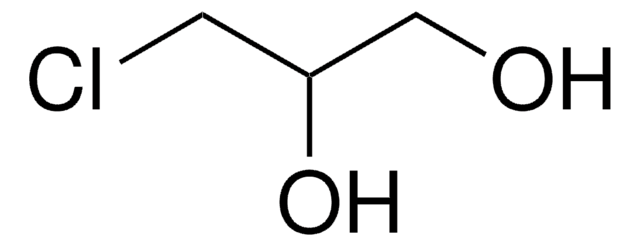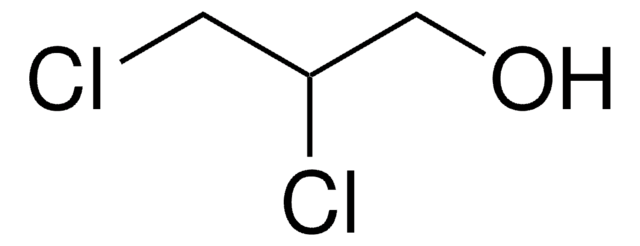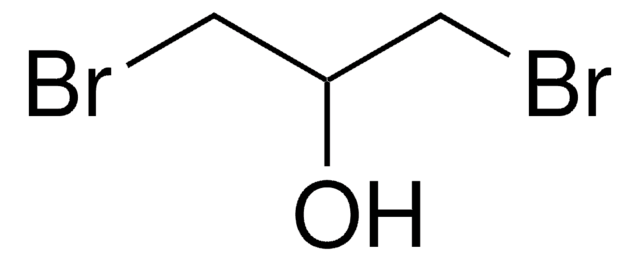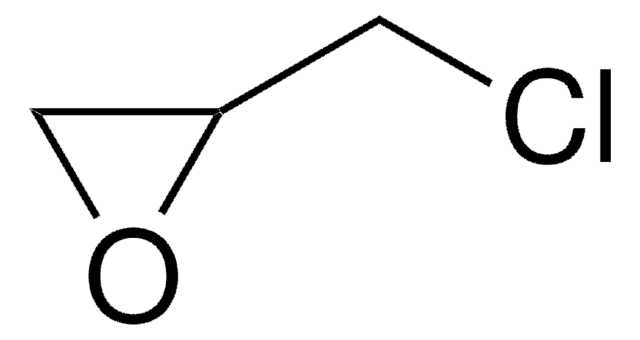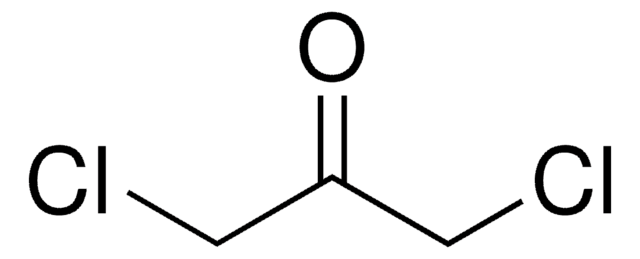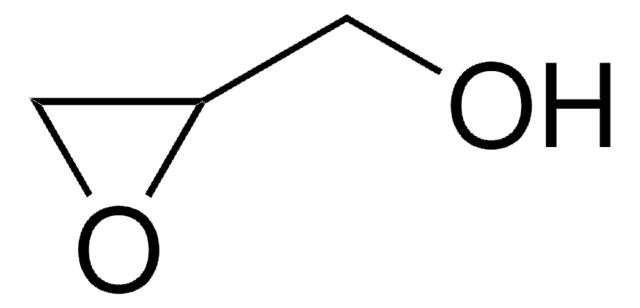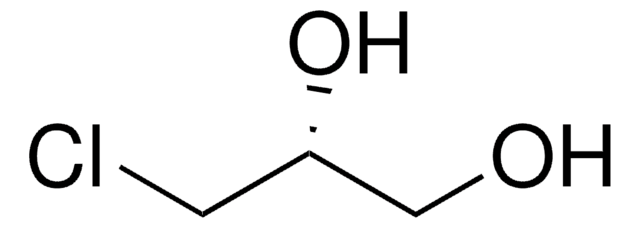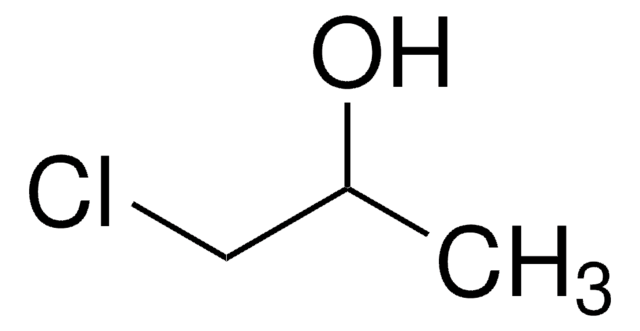おすすめの製品
品質水準
アッセイ
97%
形状
liquid
屈折率
n20/D 1.483 (lit.)
bp
174.3 °C (lit.)
mp
−4 °C (lit.)
溶解性
water: soluble 10 part
alcohol: miscible
diethyl ether: miscible
密度
1.363 g/mL at 20 °C
1.351 g/mL at 25 °C (lit.)
SMILES記法
OC(CCl)CCl
InChI
1S/C3H6Cl2O/c4-1-3(6)2-5/h3,6H,1-2H2
InChI Key
DEWLEGDTCGBNGU-UHFFFAOYSA-N
類似した製品をお探しですか? 訪問 製品比較ガイド
詳細
1,3-ジクロロ-2-プロパノールは医薬品中間体および塗料、ラッカー、エポキシ樹脂の溶剤として使用されます。
アプリケーション
- ナトリウムエトキシド触媒によるジ(ポリ)N-トシルアミドとの環化反応によるヒドロキシ-N-トシルシクラム
- 生体触媒を用いた(R)-エピクロロヒドリン。
- 土壌燻蒸剤である1,3-ジクロロプロペンと合成グリセロール。
また、エポキシ樹脂の製造中間体、硬質樹脂やニトロセルロースの溶剤としても使用できます。
シグナルワード
Danger
危険有害性情報
危険有害性の分類
Acute Tox. 3 Oral - Acute Tox. 4 Dermal - Carc. 1B
保管分類コード
6.1A - Combustible acute toxic Cat. 1 and 2 / very toxic hazardous materials
WGK
WGK 3
引火点(°F)
186.8 °F - closed cup
引火点(℃)
86 °C - closed cup
個人用保護具 (PPE)
Eyeshields, Faceshields, Gloves, type ABEK (EN14387) respirator filter
適用法令
試験研究用途を考慮した関連法令を主に挙げております。化学物質以外については、一部の情報のみ提供しています。 製品を安全かつ合法的に使用することは、使用者の義務です。最新情報により修正される場合があります。WEBの反映には時間を要することがあるため、適宜SDSをご参照ください。
毒物及び劇物取締法
毒物
PRTR
第一種指定化学物質
消防法
第4類:引火性液体
第三石油類
危険等級III
非水溶性液体
労働安全衛生法名称等を表示すべき危険物及び有害物
名称等を表示すべき危険物及び有害物
労働安全衛生法名称等を通知すべき危険物及び有害物
名称等を通知すべき危険物及び有害物
Jan Code
184489-BULK:
184489-5G:4548173289724
184489-VAR:
184489-500G:4548173289922
184489-25KG:
184489-100G:4548173288956
試験成績書(COA)
製品のロット番号・バッチ番号を入力して、試験成績書(COA) を検索できます。ロット番号・バッチ番号は、製品ラベルに「Lot」または「Batch」に続いて記載されています。
ライフサイエンス、有機合成、材料科学、クロマトグラフィー、分析など、あらゆる分野の研究に経験のあるメンバーがおります。.
製品に関するお問い合わせはこちら(テクニカルサービス)